Jenga-inspired buildings take a cue from the classic stacking game, creating visually striking structures characterized by interlocking blocks and playful forms. These structures with stacked box-like elements embrace a whimsical approach to design, challenging our notions of stability and space—who knew balancing blocks could be this stylish? Just remember to avoid the “pull one block” rule when you’re near!

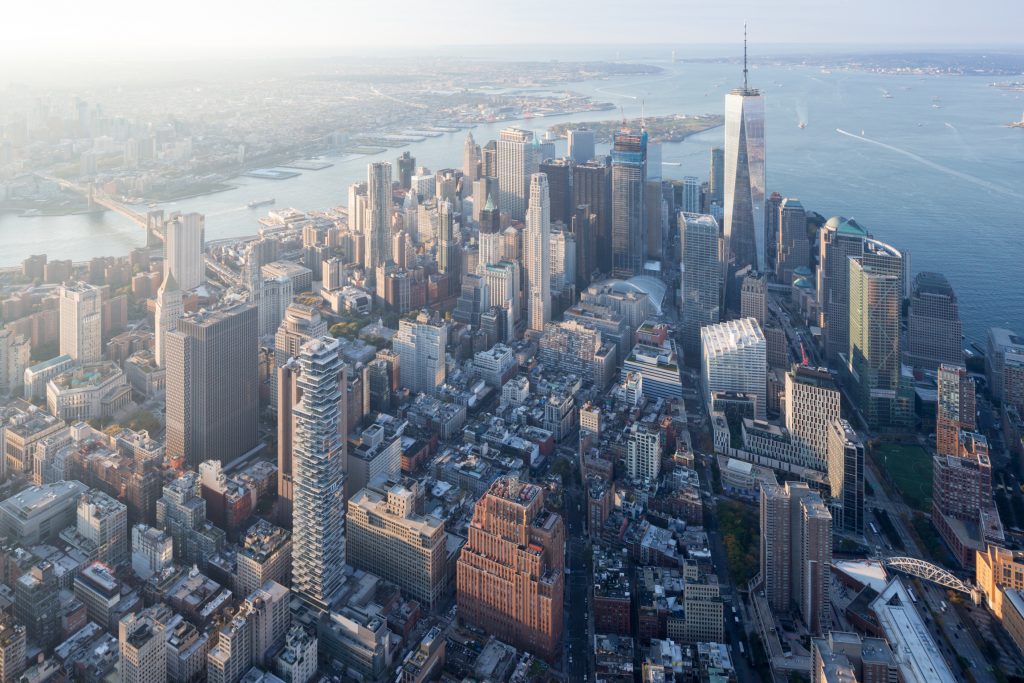
56 Leonard Street by Herzog & de Meuron
Developed by Swiss firm Herzog & de Meuron, ’56 Leonard’ is a remarkable 60-story skyscraper in New York’s Tribeca neighborhood, nicknamed the “Jenga Building” due to its unique cantilevered balconies. This design aims to break away from the uniformity of contemporary residential architecture, which often lacks distinctive elements, while fostering a sense of individuality and intimacy despite its towering presence.
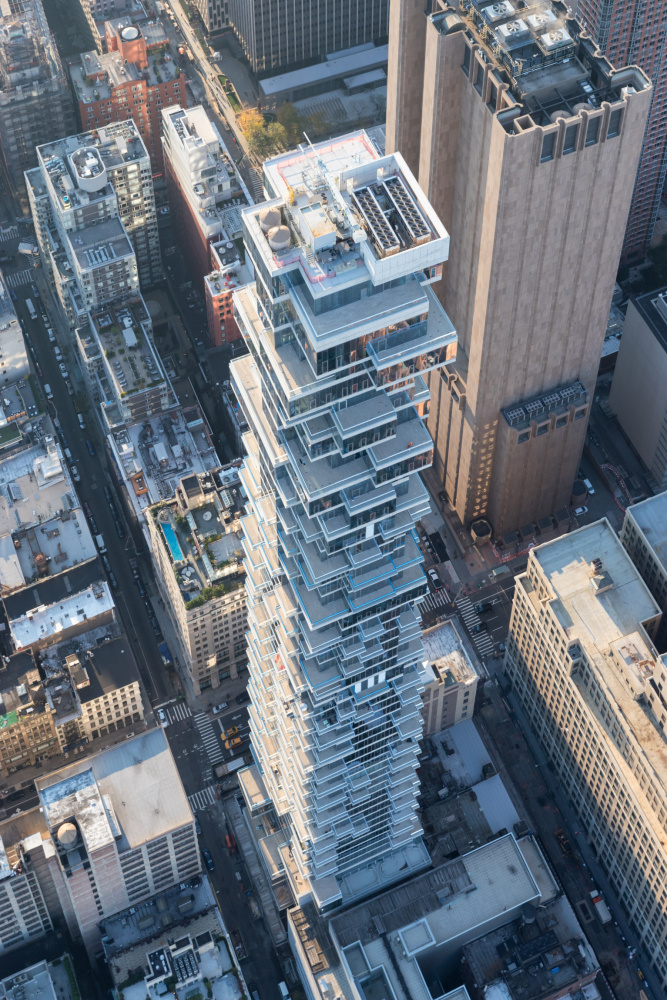
56 Leonard Street by Herzog & de Meuron
The project is conceived as a collection of unique rooms, each identifiable within the overall structure. It began with individual “blocks of glass” stacked together floor by floor, which inform both the volume and the exterior form of the tower. This stacking strategy also creates numerous terraces and projecting balconies throughout.
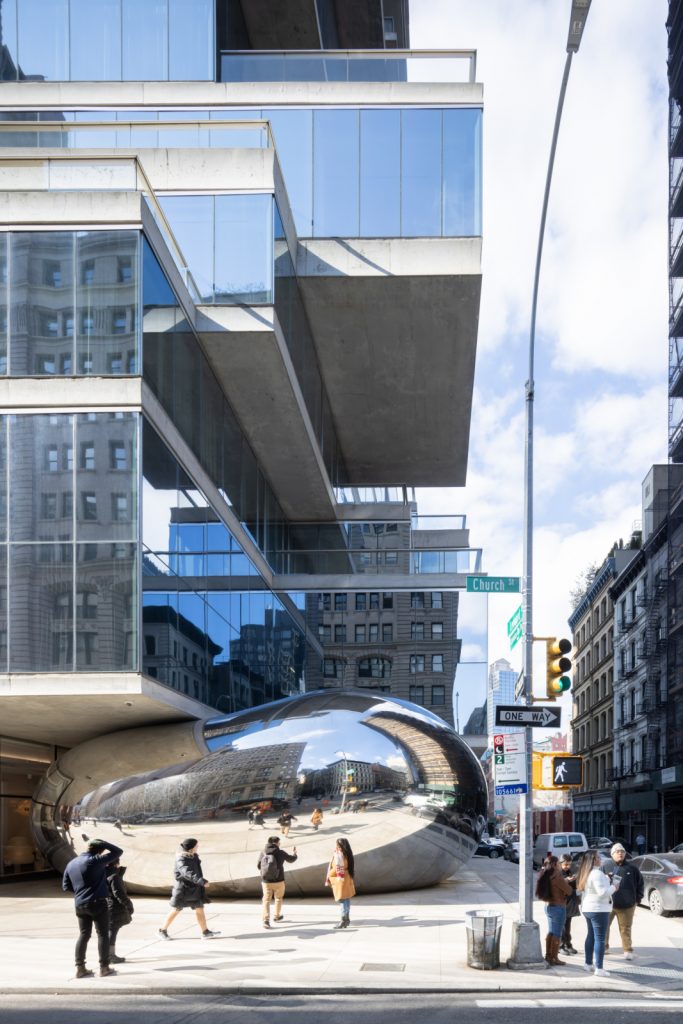
56 Leonard Street by Herzog & de Meuron
At the base, the tower responds to the local street scale, while the upper levels stagger and shift to interact with the sky. The middle sections feature a more subtle variation, reminiscent of a column shaft, providing a controlled yet dynamic appearance.
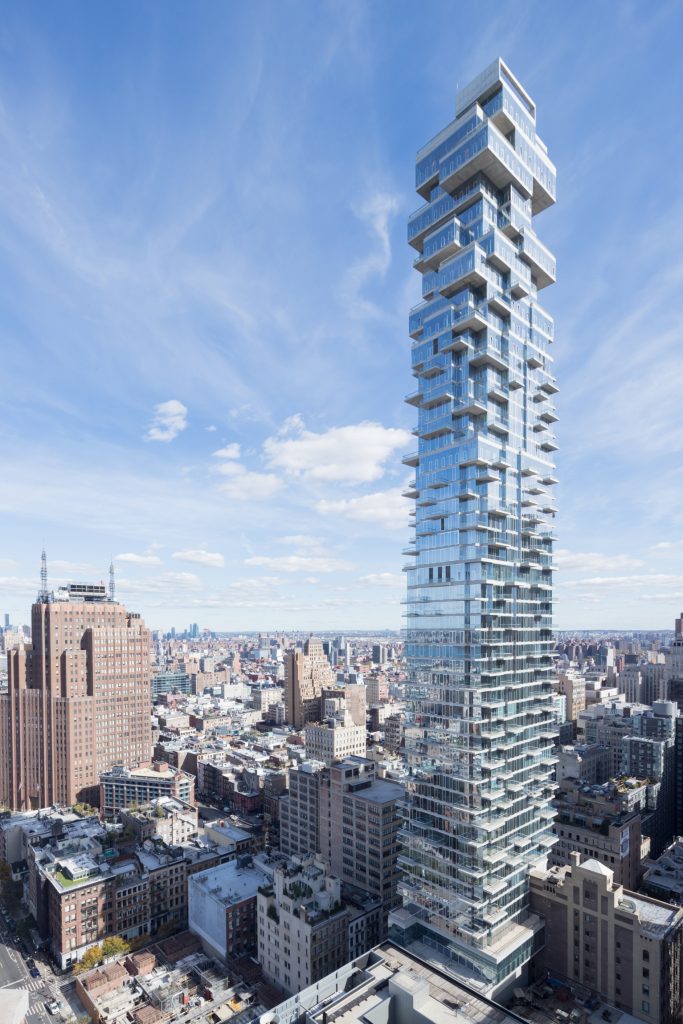
56 Leonard Street by Herzog & de Meuron
The tower’s striking appearance stems from embracing and extending traditional local construction techniques to their fullest. Rather than concealing its structural framework beneath layers of cladding, the building showcases its “bones,” with exposed horizontal concrete slabs that highlight the stacking process floor by floor.

56 Leonard Street by Herzog & de Meuron
This approach—considering the tower from the inside-out and fully utilizing local construction methods—results in a unique living experience: only five out of the 145 apartments are identical, allowing residents to enjoy distinct moments of individuality within the overall stack.
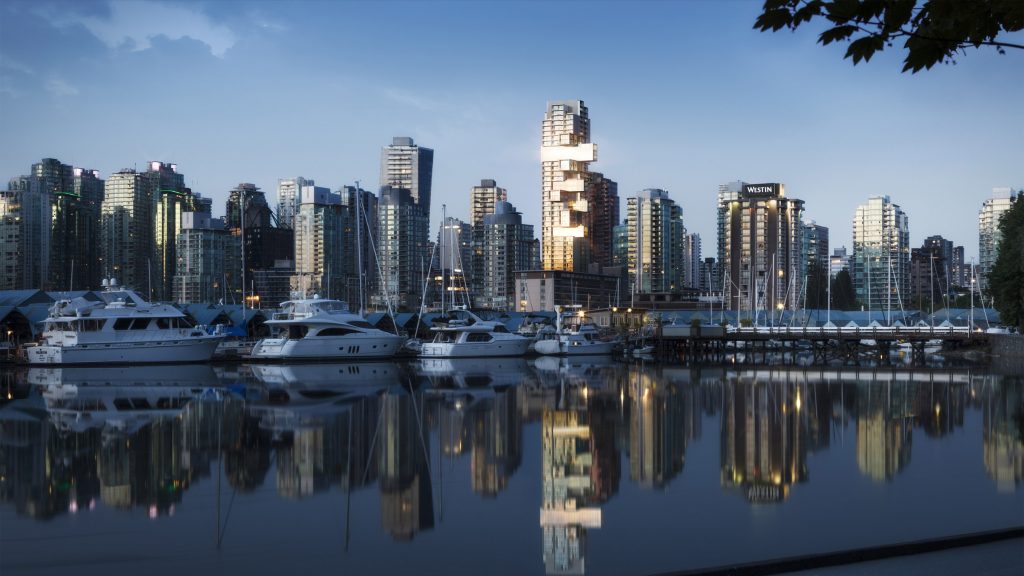
Fifteen Fifteen skyscraper by Büro Ole Scheeren
Situated on one of Vancouver’s main avenues, the Fifteen Fifteen tower, designed by the renowned international firm Büro Ole Scheeren, rises as a striking three-dimensional sculpture that disrupts the city’s skyline, typically marked by a sea of generic towers that lack connection to their surroundings.
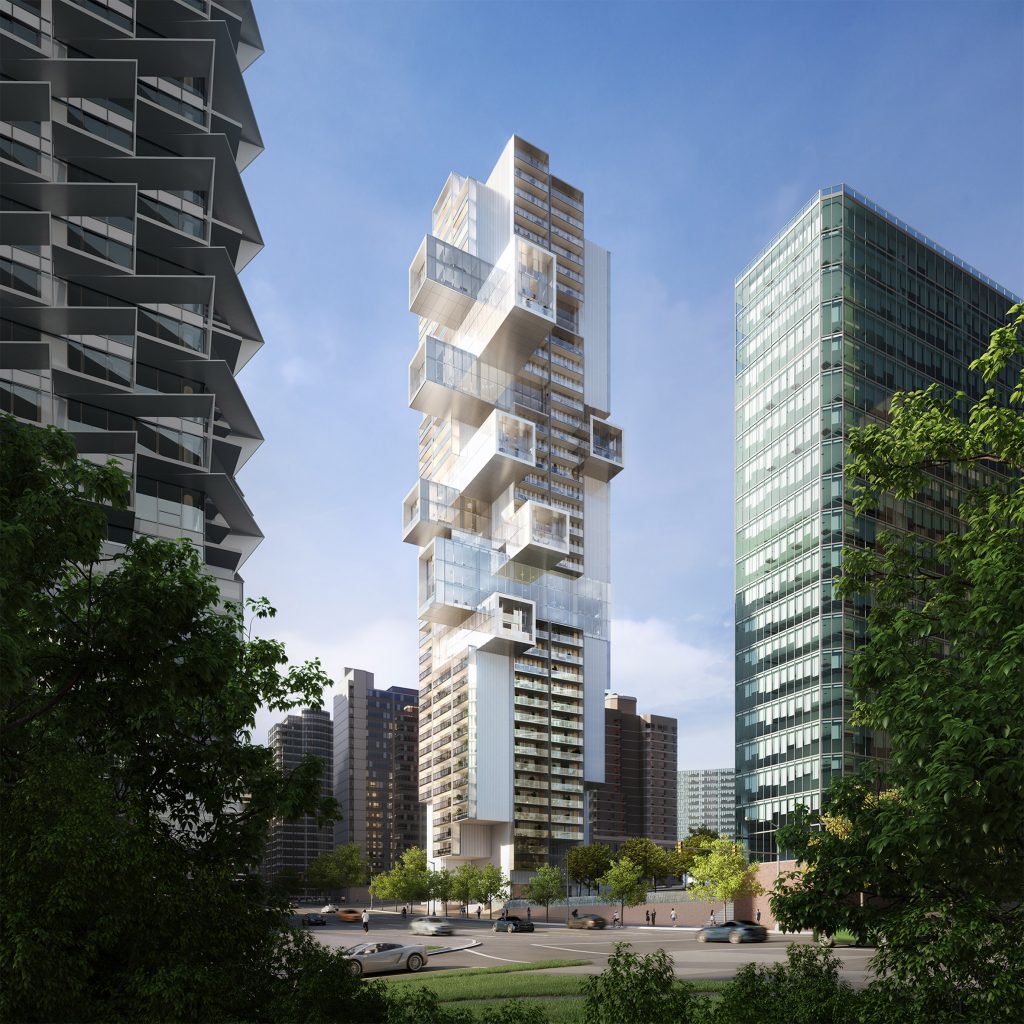
Fifteen Fifteen skyscraper by Büro Ole Scheeren
This building features a thoughtfully crafted silhouette that reaches out to engage with the urban environment, acting as a new landmark that invigorates the skyline. The design opens up to integrate both city life and nature, responding to the diverse context while maintaining views to and from neighboring buildings, and maximizing unobstructed vistas of the surrounding water, parks, and cityscape.
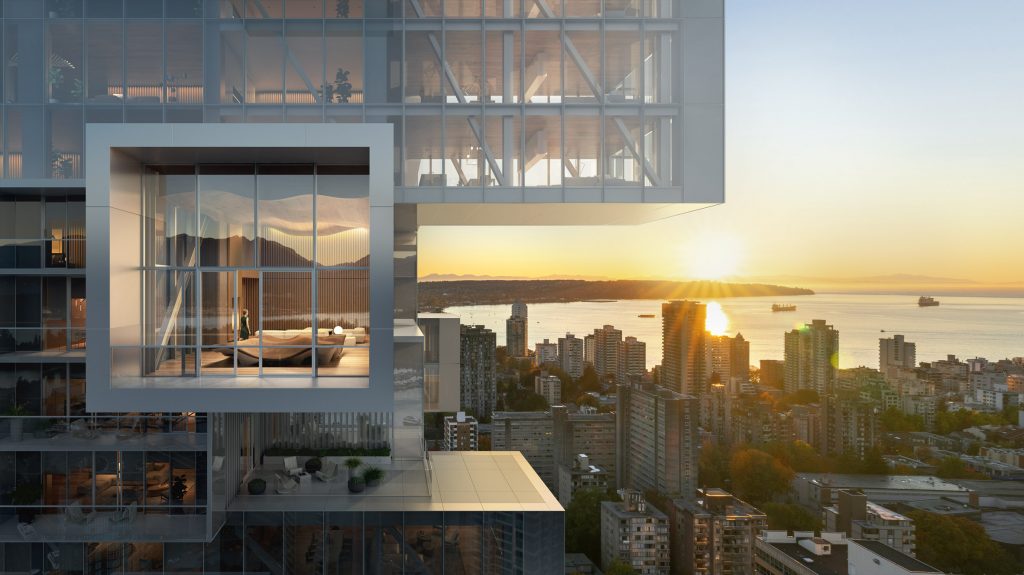
Fifteen Fifteen skyscraper by Büro Ole Scheeren
A system of vertically shifted apartment modules allows for dynamic yet efficient residential layouts, while the horizontal rotation of these modules extends living spaces outward, introducing the concept of horizontal living in a slender high-rise. This design creates multiple terraces that foster both physical and emotional connections between indoor and outdoor environments.
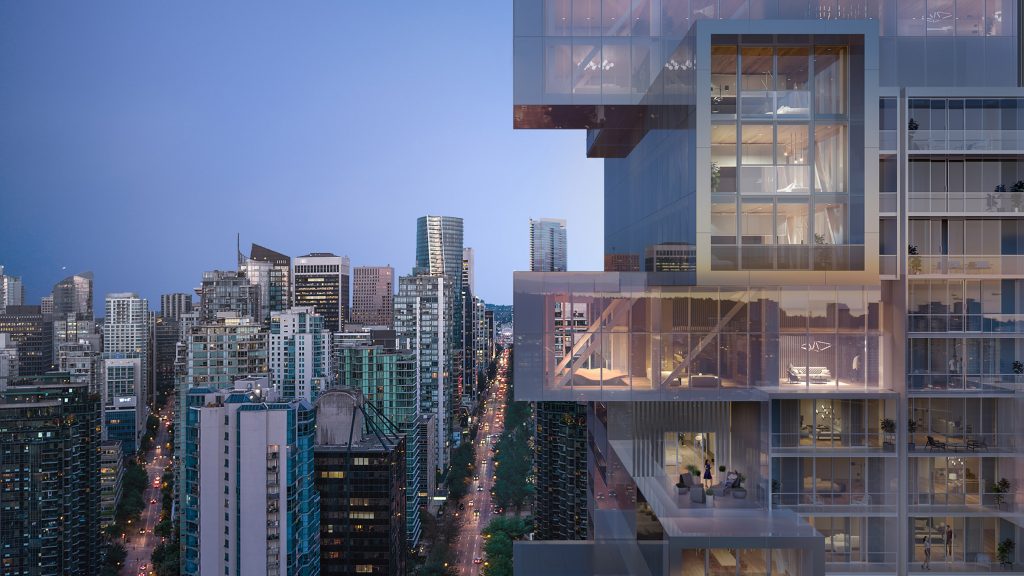
Fifteen Fifteen skyscraper by Büro Ole Scheeren
The tower will feature 202 condominiums, ranging from studios to three-bedroom homes, including 18 Observatory Residences located in the projecting sections and four luxurious penthouses. The cantilevered sections of the Observatory Residences will be enveloped in floor-to-ceiling glass, providing residents with the feeling of floating above the city and landscape. The vertical offsets of the apartment modules minimize the tower’s footprint, freeing up the ground level to create an open public plaza for both residents and the wider community.

Waldorf Astoria by Sieger Suarez Architects and Carlos Ott (also header image)
The new Waldorf Astoria tower in Miami, designed by local firm Sieger Suarez Architects in collaboration with Uruguayan architect Carlos Ott, will feature nine stacked cubes that accentuate the building’s height and suspended appearance. Each cube will have flat facades wrapped in what the architects refer to as a “glass skin.”

Waldorf Astoria by Sieger Suarez Architects and Carlos Ott
The design aims to create an iconic sculpture that seems to defy gravity, with the blocks arranged at varying angles to offer distinctive views from each space. The slender structure will incorporate a central core to manage torsion from the area’s strong winds.
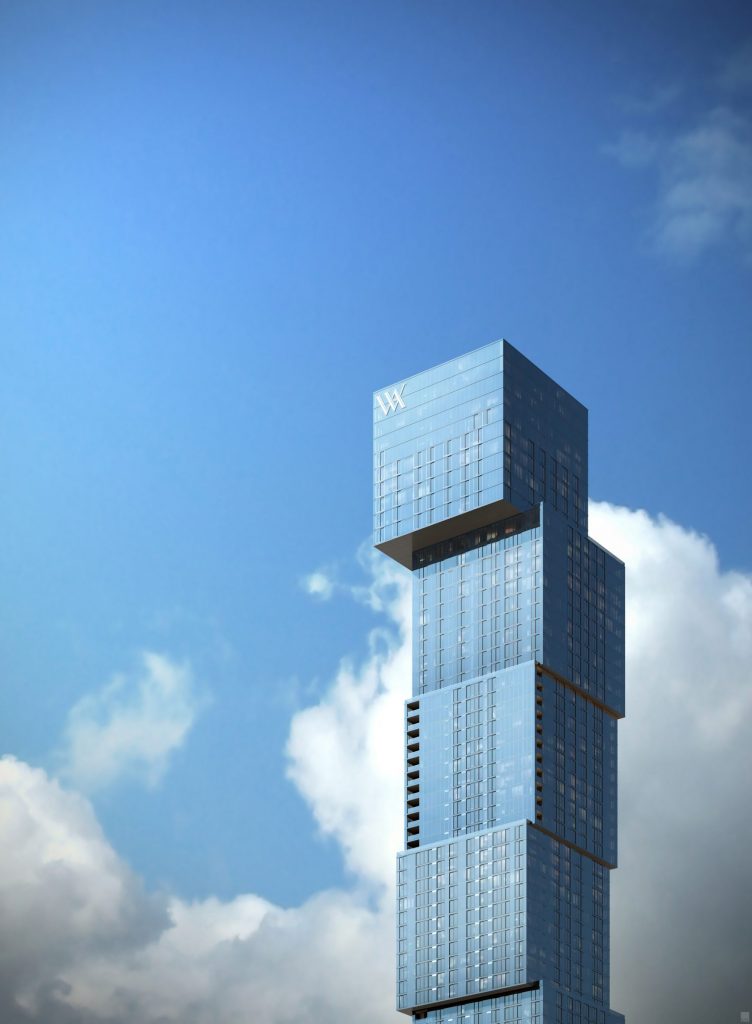
Waldorf Astoria by Sieger Suarez Architects and Carlos Ott
The tower will house both a five-star hotel and private residences, complete with floor-to-ceiling windows, all managed by Hilton Management Services. If completed on schedule in 2026, this 100-story tower will be Miami’s first supertall skyscraper.